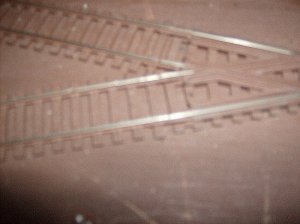I tried it Atlas' way and decided I like the opposite. I agree that putting the fixed rail on the outside would prevent the other rail from sliding back into the ties. However, I still prefer the look of doing the opposite.
Reasons: 1) I like the increased tie spacing on the outside rail rather than the decreased tie spacing on the inside rail. 2) It just seemed to work better for me.
To prevent the rail from pulling back from some of the ties, you simply cut off more ties. Form the track into approximate position, then you can determine how much of the inside rail to cut off, along with how many ties to cut out.
As for Atlas' suggestion, you have to keep in mind these are also the guys who make turn-outs with hinged points held on by little brass tabs bent at a 90 degree angle, and use too small plastic nubbins on the other end at the point throw-bar.

:twisted:



